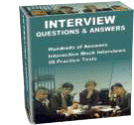Automotive Power Electronics
This book is all about Automative power Electronics.This book based on power control
New Power Stabilizing Technique
The new simple way of power stabilization for limited range loads is proposed which is based on adding signals, proportional to output voltage and current, instead of multiplying them.
Power BJTs and Power Darlingtons
This is a nice book on power semiconductor.It describes the Power BJTs and Power Darlingtons
DC to DC Conversion Choppers (PDF 41p)
DEFINITION: Converting the unregulated DC input to a controlled DC output with a desired voltage level.
Overview of DC DC converters and topologies
This course will teach the basics of linear, inductive, switched capacitor DC to DC converter products from Portable Power Systems perspective. It will not cover controllers, battery chargers, supervisors, LED drivers or products for specific purposes such as PMUs, LMUs, RF-PA drivers, CCFL drivers, TFT power supplies etc.
DC to AC Conversion Invertors (PDF 50p)
DC to AC Conversion
� General concept
� Basic principles/concepts
� Single-phase inverter
� Square wave
� Notching
� PWM
� Harmonics
� Modulation
� Three-phase inverter
DC Motor Drive (PDF 36p)
Motor Drives
� General principles motors
� Motor drive systems
� DC motor drives
� AC motor drives
dc dc controller design using TL5001
The TL5001 integrated circuit incorporates all the PWM-control functions in a compact 8-pin package, including:
� Oscillator/triangle-wave generator
� PWM comparator with adjustable dead-time control input
� Open-collector output-drive transistor
� 1-V temperature-stable reference
� Wide-bandwidth error amplifier
� Short-circuit protection (SCP)
� Undervoltage lockout (UVLO)
ELECTRONIC POWER CONVERSION
To understand the characteristics and operation of Power Electronic Devices, the requirements andsuitable applications. To gain knowledge on power electronic topologies, modelling and simulation techniques, waveform generations and control,performance analysis and applications.
Power electronics KEPCO applications handbook
Power supplies exist to provide five separate and distinct functions:
Change the output to a different voltage level than the input (step up or step down)
Rectify a-c into d-c
Isolate the output from the input
Stabilize the output against the influence of:
Source changes (source effect)
Load changes (load effect)
Temperature changes (temperature effect)
The passage of time (time effect or drift)
Provide the user with a means to vary the output.
ELECTRONIC POWER CONVERSION - Free eBook ELECTRONIC POWER CONVERSION - Download ebook ELECTRONIC POWER CONVERSION free
|

 ELECTRONIC POWER CONVERSION
ELECTRONIC POWER CONVERSION Visits: 33629
Visits: 33629  Rating:
Rating:  (3.0)
(3.0)
 Rated By: 1049 Users
Rated By: 1049 Users Added On: 14-Jun-2011
Added On: 14-Jun-2011
 Download ELECTRONIC POWER CONVERSION
Download ELECTRONIC POWER CONVERSION
 Category: Power Electronics
Category: Power Electronics




